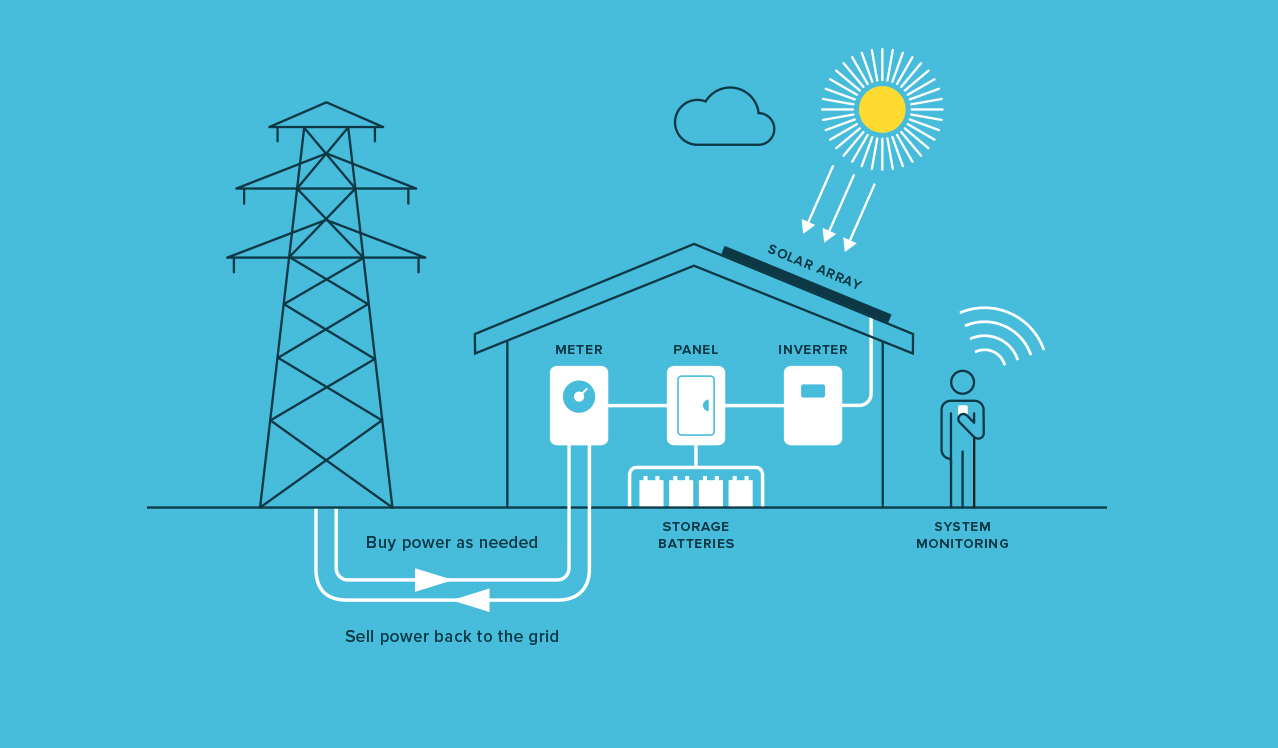How does solar energy work?
Key components of a solar energy system
When you see solar panels on a roof, have you ever wondered — how does solar work? Let’s review the key components of a solar energy system and how it all they all work together.
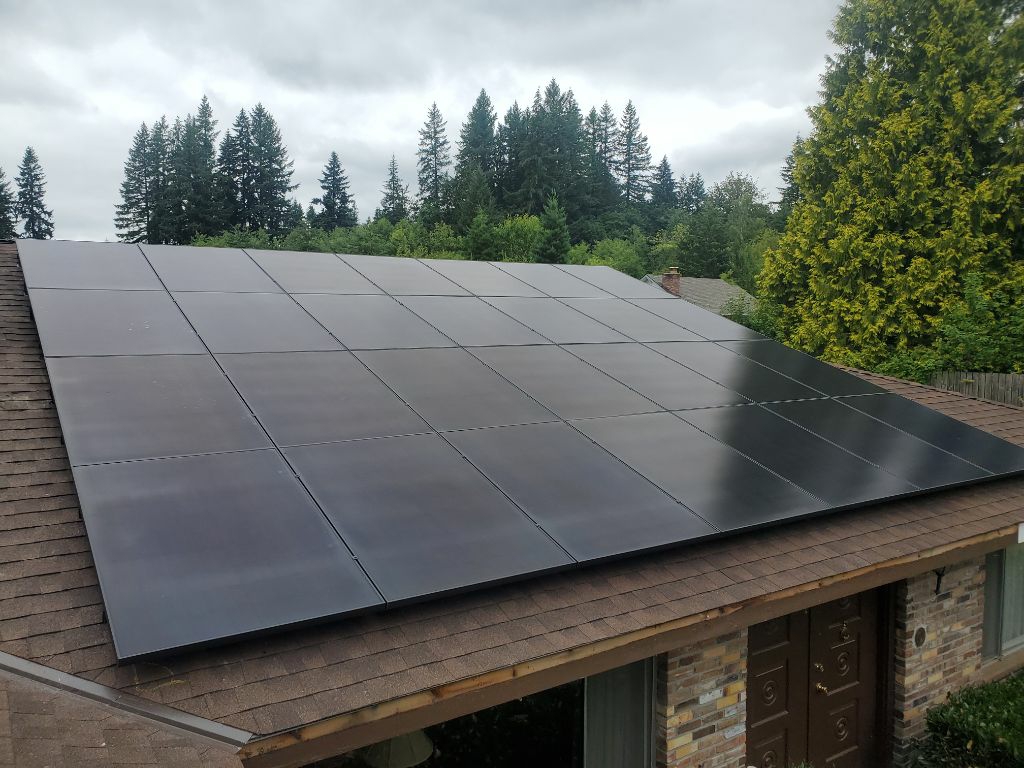
Solar Array
An array is a collection of solar panels comprised of “cells” which harvest the sun’s energy. When a photon from the sun hits a cell, it knocks loose an electron from the silicon atoms that make up the cell. The electrons are collected by the wires connected to the solar cell and wha-la, power! These wires are connected to other cells to make up a solar panel. One panel is connected to the next in a series of parallel connections known as a “string.” Your array is made up of one or more of these strings.
Inverter
Your array wiring comes down from the roof in a fashion that matches your inverter type. Hybrid inverters are usually located on a wall near your main service panel and convert the DC electricity of the solar array to AC electricity so it can be used in your house (and optimizers are installed behind each solar panel for shade and communication). Alternatively, micro-inverters are installed behind each solar panel and the DC-AC inversion occurs on the roof, sending AC electricity to your main service panel. Both systems have their advantages and disadvantages depending on the site.
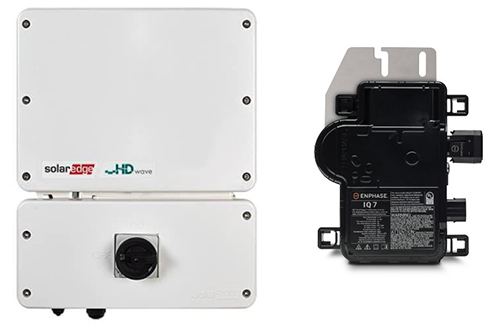
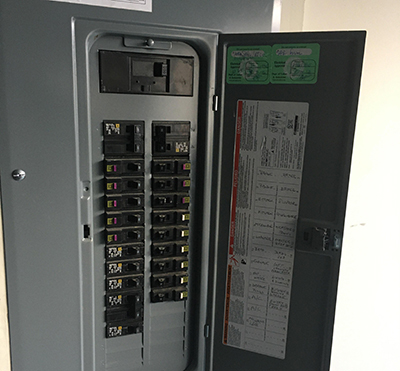
Main service panel
The electricity flows from the inverter, through more wiring and conduit, to your main service panel. In most cases, we install a solar breaker at the bottom of your main service panel (aka electrical panel or breaker panel). This connection to your service panel is what makes it possible to power your home with solar. The solar electricity flows first to any loads running in the house, such as a refrigerator, TV, lights, or anything else that might be consuming power while the sun is shining.
Net meter
If you have excess power being produced, the electricity is pushed out to the world at large through your net meter. A net meter is also considered your “Utility Billing Meter.” Here in Washington and Oregon, your utility allows you to spin your net meter backwards and generate a credit on your electric bill for your excess solar power (cha-ching!). These credits tend to build up quickly in the summer months and can be cashed in during the less sunny winter months.
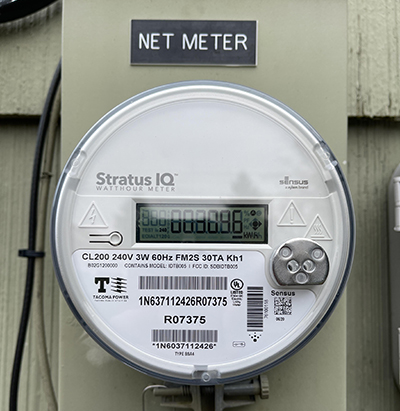
Additional features
These add-ons will allow you to track and chart your system’s efficiency, and store power for future use
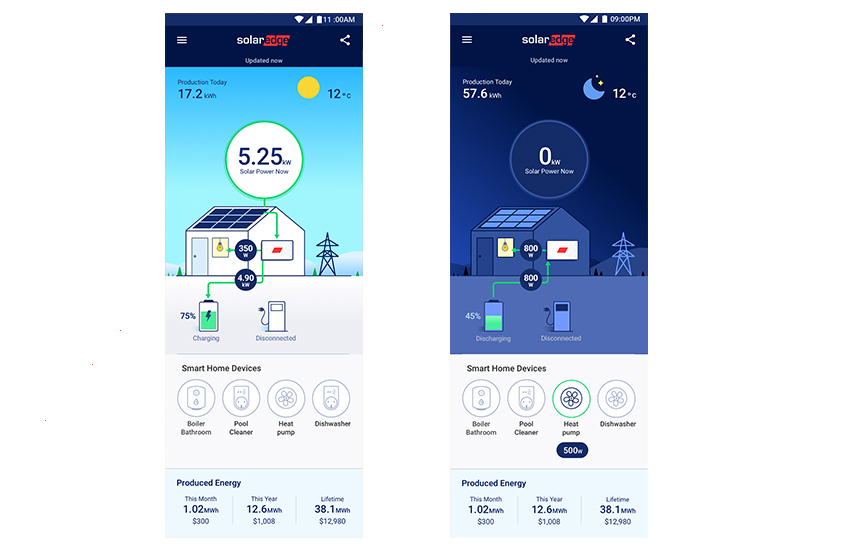
System monitoring
Monitoring your solar energy system allows you to see up-to-the-minute solar energy production from your system using an app or web-based portal on your laptop or mobile phone. Some even track the overall energy use within your home so you can compare it to what you’re generating. The easy-to-understand charts and animations help you see and show others how your panels perform under various conditions.
Battery storage
Battery storage systems provide peace of mind by providing a clean, reliable, and affordable way to keep the lights on during power outages caused by storms or earthquakes. Solar PV systems are designed to shut down during outages to protect utility workers, but storage systems allow buildings to stay powered even through the night. The batteries are recharged by your home’s solar PV system every day.

RESIDENTIAL SOLAR
A complete system will power your home, store energy for future use, and earn credits with your utility.
